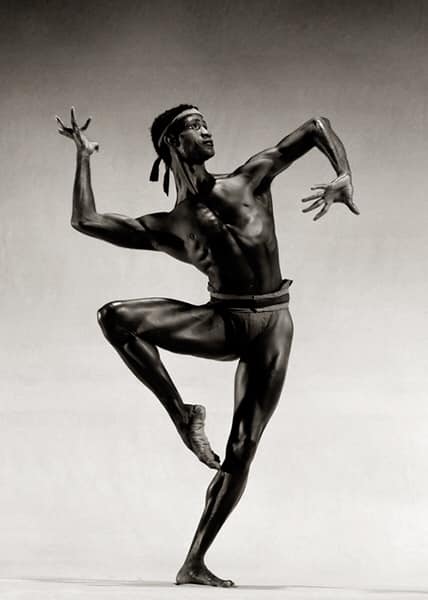By Jordan Meadows
Staff Writer
Mel Alexander Tomlinson’s life began in Raleigh, North Carolina, and continued to the grand stages of America’s greatest dance companies.
Born on January 3, 1954, Mel Tomlinson grew up in the Chavis Heights public housing neighborhood of Southeast Raleigh. The son of Tommy and Marjorieline Tomlinson, Mel’s father worked for Krispy Kreme Doughnuts and as a delivery man for a jeweler, while his mother was a homemaker. Even as a child, Mel stood out for his energy and determination. While most children rode bicycles, he proudly rode a unicycle—a Christmas gift his father saved for when Mel was just nine.
 His love for movement took shape in his teenage years at Fred J. Carnage Junior High School, where he studied under local ballet teacher Betty Kovach. At John W. Ligon Senior High School, a segregated school in the 1960s, he continued to explore dance and gymnastics.
His love for movement took shape in his teenage years at Fred J. Carnage Junior High School, where he studied under local ballet teacher Betty Kovach. At John W. Ligon Senior High School, a segregated school in the 1960s, he continued to explore dance and gymnastics.
It was during a high school halftime performance, where he served as the school mascot, that a local ballet instructor noticed his natural talent and offered him free dance lessons—a gesture that would set the course of his life.
Tomlinson pursued formal training at the North Carolina School of the Arts (now the University of North Carolina School of the Arts), where his talent quickly distinguished him. Choreographer Agnes de Mille discovered him there and called him “the most exciting black dancer in America.” After earning his Bachelor of Fine Arts in dance, he joined de Mille’s Heritage Dance Theater, marking the beginning of his professional career.
In 1974, Tomlinson moved to New York City and joined the Dance Theatre of Harlem, founded by Arthur Mitchell and Karel Shook. He was also courted by the Joffrey and Boston Ballets but chose Dance Theatre of Harlem for its groundbreaking mission of representing African Americans in classical ballet.
As a soloist, he performed standout roles in Manifestations, Swan Lake, and Scheherazade. In Manifestations (1975), he portrayed the Snake with such realism that he studied and mimicked an actual snake he kept in a cage — a testament to his immersive artistry. He later danced with Alvin Ailey American Dance Theater, where audiences were captivated by his performances in Alvin Ailey’s Pas de Duke alongside Judith Jamison. Returning to Dance Theatre of Harlem in 1978, he continued to establish himself as a performer of both emotional depth and technical precision.
Tomlinson’s ascent reached a historic peak when George Balanchine invited him to join the New York City Ballet in 1981—making him the company’s only African American dancer at the time. He debuted on November 27, 1981, in Balanchine’s Agon, dancing opposite Heather Watts in the role originally created for Arthur Mitchell. The New York Times described his performance as “electrifying.”
During his years with the New York City Ballet, where he rose to the rank of soloist, Tomlinson questioned his place in a predominantly white company. He once asked Balanchine, “Am I here because I’m an artist, or because I’m an only-est?” — meaning the only Black man.
After leaving New York City Ballet in 1987, Tomlinson received the first annual North Carolina Prize for outstanding work in the performing arts. He returned home to North Carolina, joining the faculty at his alma mater, the North Carolina School of the Arts. He also danced as a principal with the North Carolina Dance Theatre in Charlotte, later performing and teaching with the Boston Ballet and serving as a master teacher in the CITYDANCE outreach program.
Throughout his career, Tomlinson taught at Harvard University, Boston Conservatory of Music, the University of North Carolina at Charlotte, the Greensboro Ballet School, and Charlotte Ballet, influencing generations of young dancers with his discipline and warmth.
But life dealt him severe trials. In the 1990s, after collapsing, Tomlinson was diagnosed with HIV, which later developed into AIDS. By December 1998, he was admitted to the House of Mercy hospice in Belmont, North Carolina, where doctors expected him to live only six months. He nearly died three times but defied all odds, recovering and leaving the hospice in 2000. During his stay, he became a certified phlebotomist and earned a Ph.D. in theology from the Carolina University of Theology.
In his later years, Tomlinson lived in Charlotte and served as a minister at St. Paul Baptist Church, where he led The Hallelujah Dance Corps and delivered sermons in American Sign Language — performing spiritual expression with the same grace and emotional depth that had marked his stage career.
Even after his illness, Tomlinson occasionally returned to the stage. In December 2018, just weeks before his death, he performed as Drosselmeyer in Nut ReMix with New Ballet Ensemble & School in Memphis.
Mel Tomlinson passed away on February 5, 2019, in Huntersville, North Carolina, at the age of 65, from pancreatic cancer.
Today, the Mel Tomlinson Scholarship at the University of North Carolina School of the Arts inspires young dancers to pursue their dreams beyond all boundaries—just as he did.
